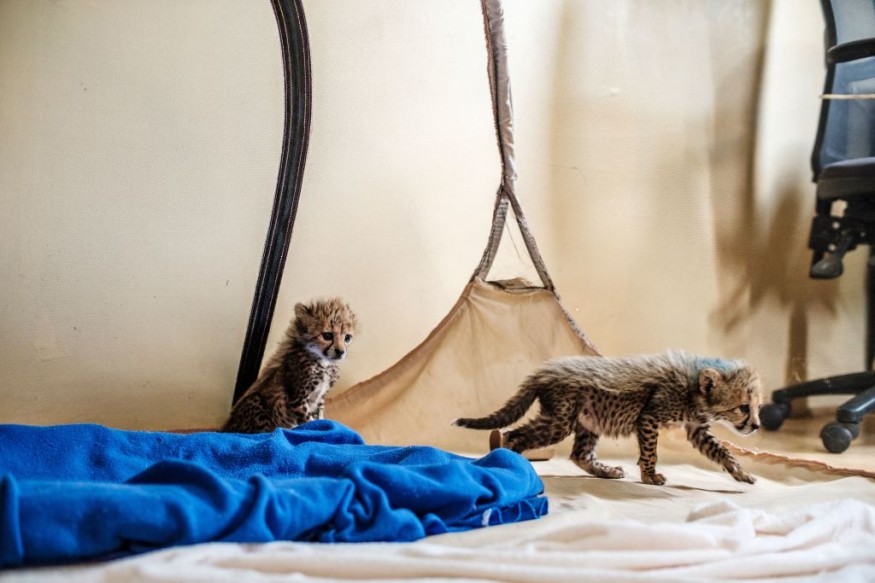
Two cheetah cubs have joined Lincoln Children's Zoo where they are being trained as part of the species survival strategy.
Cheetah Survival Plan
Two female cheetah cubs, who were just six weeks old when they arrived at the Lincoln Children's Zoo on June 19, were born in Oregon's Wildlife Safari in May.
The Lincoln Children's Zoo was chosen as a fantastic location for the cubs to serve as ambassadors for their species by the Association of Zoos and Aquariums' Cheetah Species Survival Plan, according to the zoo.
The cubs were enthusiastically welcomed by the Lincoln Children's Zoo and the ambassador team, according to CEO Evan Killeen. The use of ambassador animals is crucial because it helps raise awareness of endangered species like cheetahs, conservation efforts, and wildlife in general.
Less than 7,100 cheetahs can still be seen in the wild today, and that number is dropping.
As an endangered species, cheetahs are in grave danger of going extinct.
Cheetahs can be found in a variety of parts of Africa, including eastern and southern Africa, the Sahel, and north and north-eastern Africa, according to data from the Smithsonian's National Zoo & Conservation Biology Institute. But during the past five decades, they have vanished from at least 13 nations.
The highest cheetah populations are found in Botswana and Namibia in southern Africa, Tanzania, and Kenya in east Africa, and Namibia. Iranian wildlife includes the extremely endangered Asiatic cheetah. Cheetahs flourish in vast habitats with an abundance of prey, like Namibia's grasslands, savannahs, deep forests, and hilly terrain. Cheetahs are becoming more common on industrial farms as human settlement encroaches upon their natural habitats.
Cheetahs are currently categorized as Vulnerable on the IUCN Red List. The species are a protected species in Namibia and they are protected under the Endangered Species Act in the United States, according to the Cheetah Conservation Fund.
Two Cheetah Cubs in Lincoln Children's Zoo
The animal care team of the zoo began training the cubs as soon as they got in to teach them the basics, desensitizing them to their environment' sounds and sights, and developing a positive reward system.
According to the Zoo, they will continue to teach them and add skills that would eventually enable them to excel in the cheetah run.
As their mother in the wild would naturally be instructing them on how to pursue and grab prey, preparing the cheetah cubs to take part in the cheetah run is highly enriching for them, according to Lissa McCaffree, general curator of the Lincoln Children's Zoo.
On June 27, the cubs also ventured outside for the first time. Zookeepers first had a modest outdoor space, which was subsequently expanded as they grew accustomed to their environment and were able to develop their strength and stamina. Other daily enrichments are given to the cubs, like tall grass, logs, and little plants in their habitat.
The cubs currently enjoy chasing each other and running around the vegetation in their environment, according to the zoo.
They will be unveiled to the public at the Cheetah Chase Theater on Tuesday at 11 AM. From that point on, the cubs will be present in the Cheetah Chase Theater every day at 11 AM, where visitors can observe as keepers assist the cubs in adjusting to their new environment and taking part in daily training.
As the cubs mature, they will eventually spend an increasing amount of time outside and only brief amounts of time in their environment.
The Lincoln Children's Zoo will soon seek the public's assistance in naming both of the cubs, 1011 NOW reports.
Related Article : Heatwave Kills Cheetah Cubs Said to End Extinction of Species in India
© 2026 NatureWorldNews.com All rights reserved. Do not reproduce without permission.





